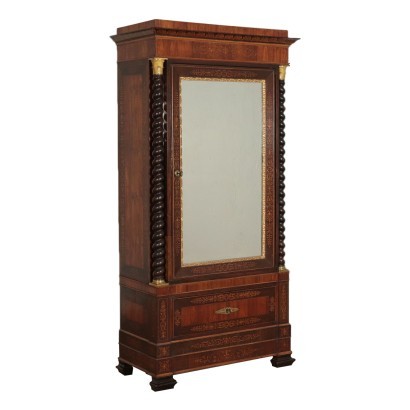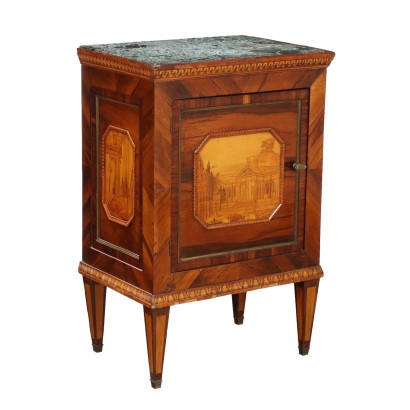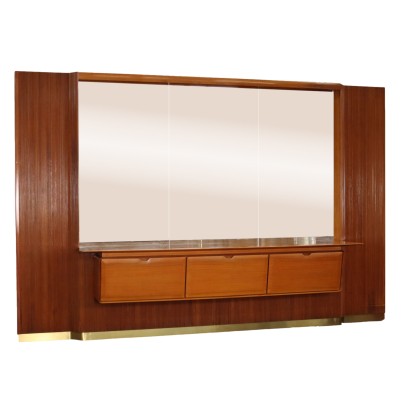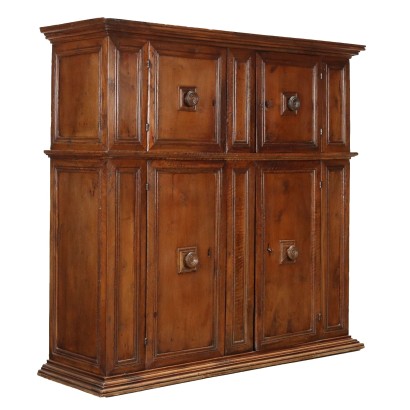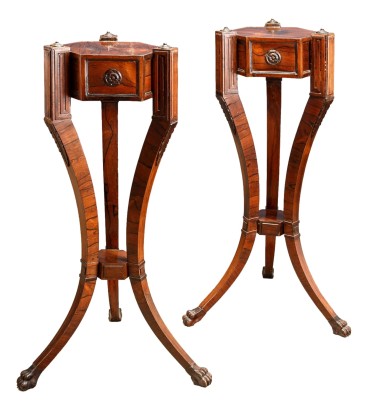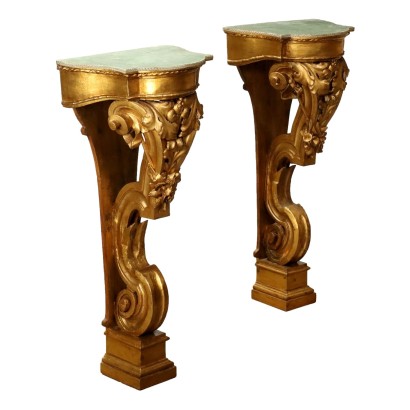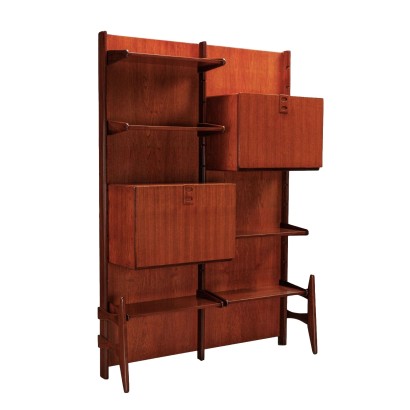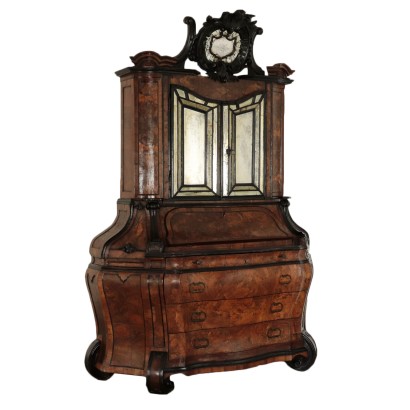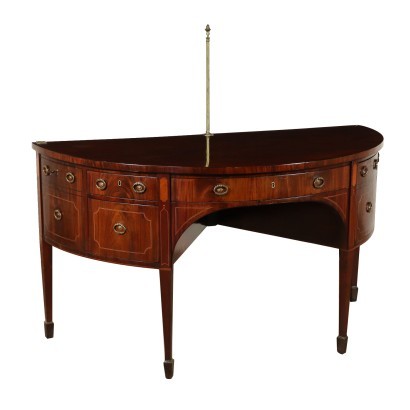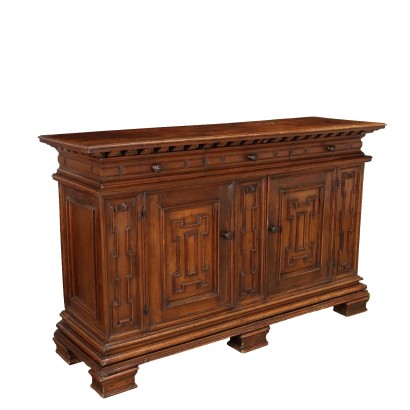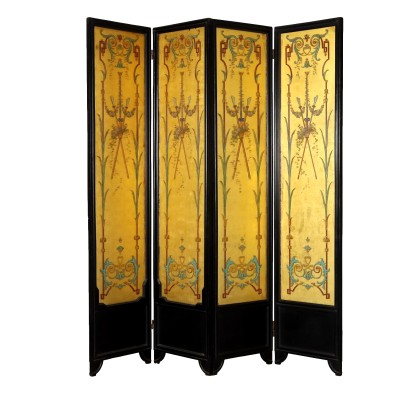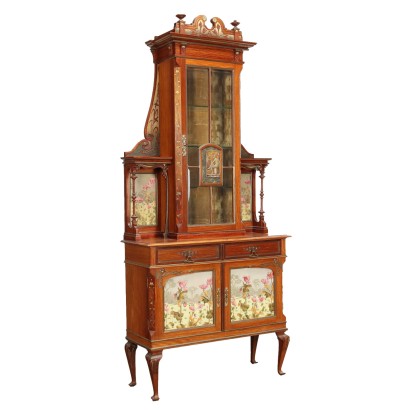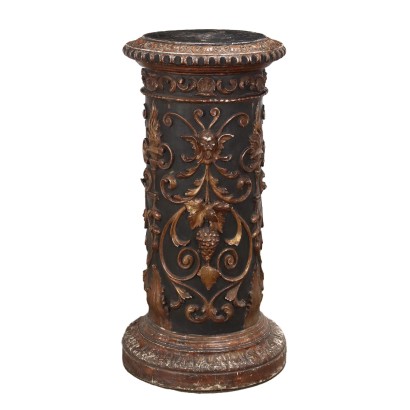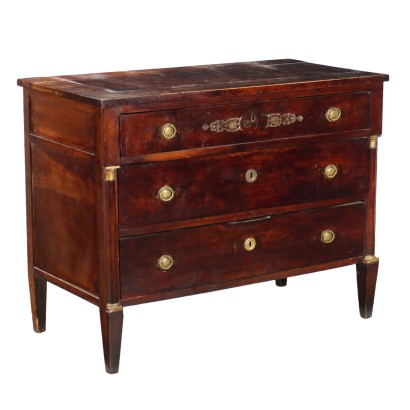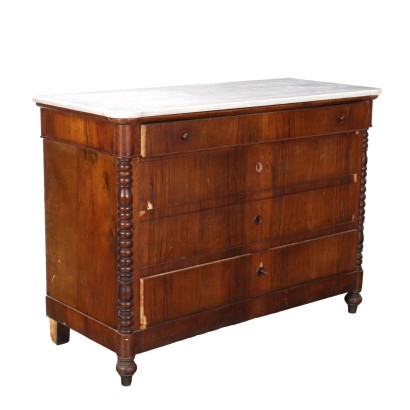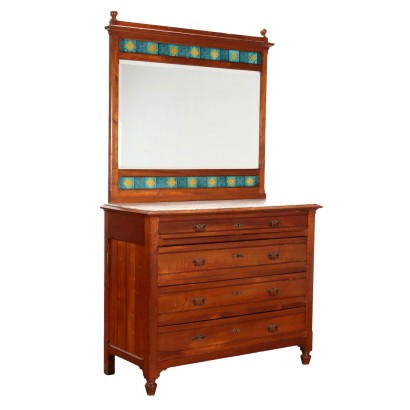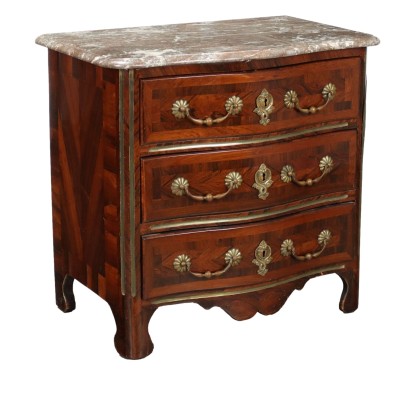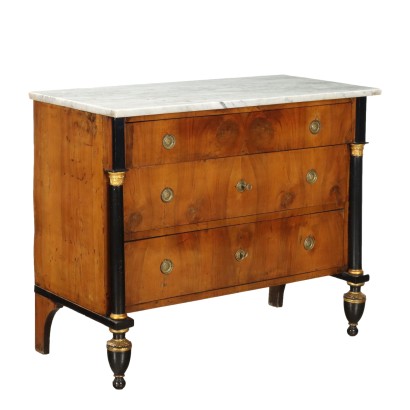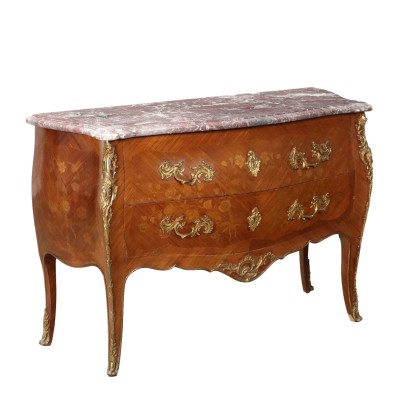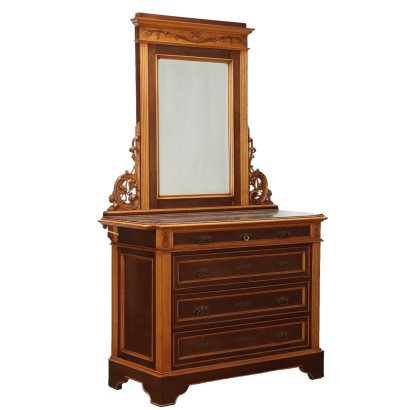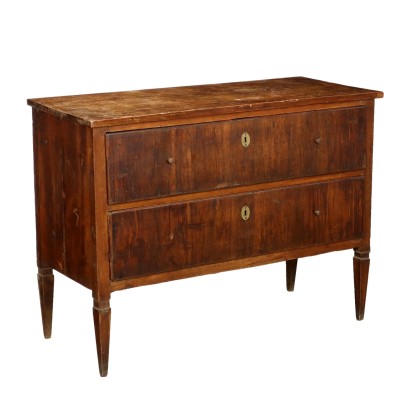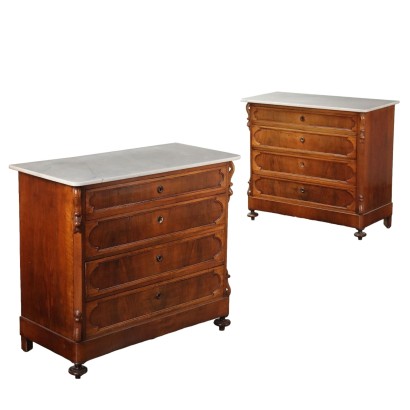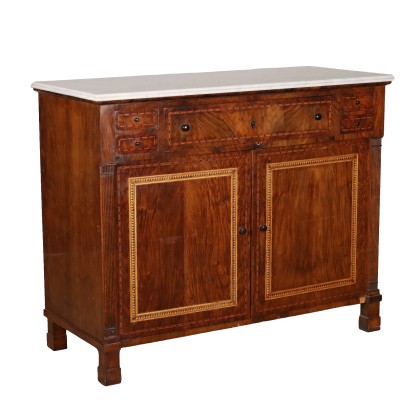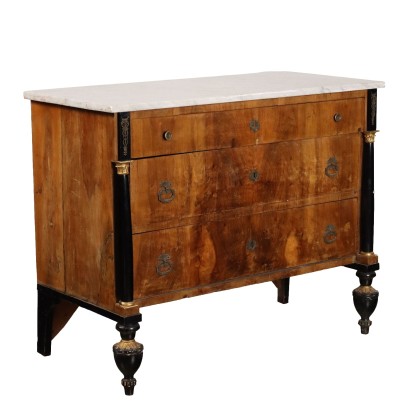Charles X Wardrobe Rosewood Italy 19th Century - Inlaid cabinet
Features
Inlaid cabinet
Age: 19th Century / 1801 - 1900
Origin: Milano, Lombardia, Italy
Main essence: Rosewood
Description
Wardrobe with one door and a drawer. It appears architecturally as a plinth with a rectangular base on vase-like feet and marked on the top with a light frame. To break the architectural balance there are two twisted all round columns siding the door made with a big framed mercury mirror. The entire surface is made with rosewood with Brazilian rosewood reserves and refined inlays of "antemi" and spirals that are repeated on the framing bands of the reserves; on the top frame is inlaid a Greek fret; the inlaid frame of the door marks the mirror with a finely inlaid and gilded moulding. Light maple frames interrupt the ones made with rosewood and Brazilian rosewood while there is gold in the inlay of the door but also in the bronzes that complete the bases and the capitals of the columns and in the locks. The lock is marked F.Vago in Milan.
Product Condition:
Cabinet in fair condition. Wear consistent with age and use. Any damage or loss is displayed as completely as possible in the pictures. Product with a Certificate of Authenticity and Lawful Origin.
Dimensions (cm):
Height: 190
Width: 95,5
Depth: 46,5
Certificate issued by: Enrico Sala
Restoration options
Minimal restoration
09/03/2021 Antitarlo, igenizzazione interna, pulitura, stuccatura, ripresa della lucidatura a gommalacca in patina con finitura a cera.Complete restoration
09/033/2021 Antitarlo, incollare lastroncini e intarsi sollevati, sverniciatura, stuccatura, rifacimento della lucidatura a gommalacca con finitura a mezzo tampone. Interni ripresa a gommalacca.Additional Information
Age: 19th Century / 1801 - 1900
19th Century / 1801 - 1900Main essence: Rosewood
Under the term Rosewood various exotic, hard and heavy woods have been united, characterized by a color that varies from pink to violet. Their origin is usually from Latin America, India and Africa and are still considered very valuable woods. Until the end of the eighteenth century, this name also referred to the bois de violette . In general, rosewood woods began to be imported into Europe starting in 1750 and were first used for veneers and inlays in England, flanked, by contrast, with lighter woods. Later, entire valuable furniture was manufactured both in England, mainly in the Regency style, and in France, starting from the Neoclassical period.Other customers have searched:
Per saperne di più sugli armadi antichi, consulta i nostri approfondimenti:
Semplicità e funzionalità dell'armadio lombardo tra '600 e '700
Gli arredi di antiquariato by FineArt
Uno stipo toscano tra XVI e XVII secolo
Sull'antiquariato in generale dai un'occhiata anche a
Classic Monday: da un pezzo dei nostri magazzini alla storia dell'antiquariato
L'antiquariato dalla A alla Z: il Dizionario dell'Antiquariato
Il dizionario dell'antiquariato - Lastronatura
Il dizionario dell'antiquariato - Mascherone
Il dizionario dell'antiquariato - Natura morta
Il dizionario dell'antiquariato - Opificio
Il dizionario dell'antiquariato - Pastiglia
Il dizionario dell'antiquariato - Savonarola
Il dizionario dell'antiquariato - Rosone
Product availability
The product can be seen at Cambiago
Immediate availability
Ready for delivery within 2 working days from ordering the product.

